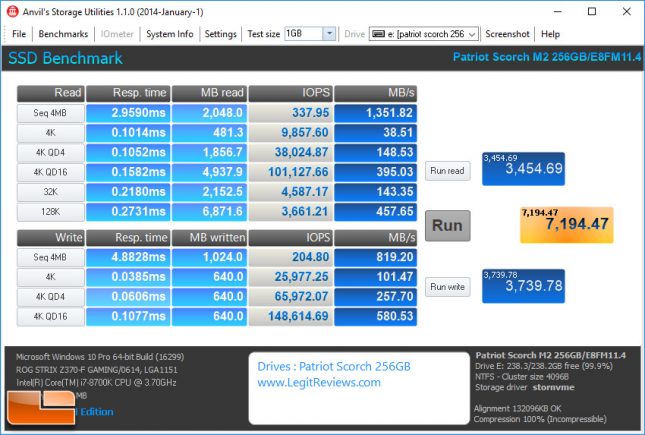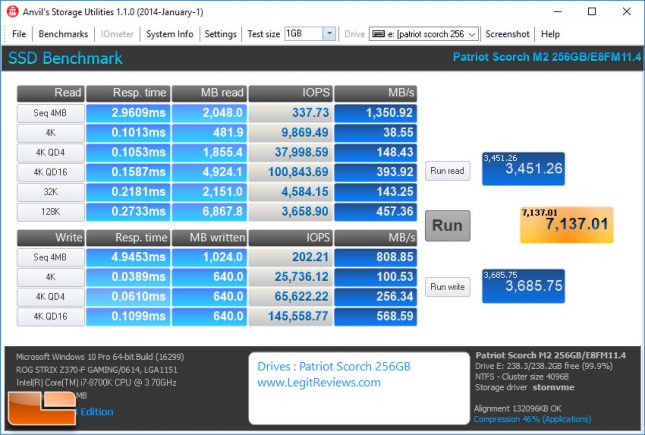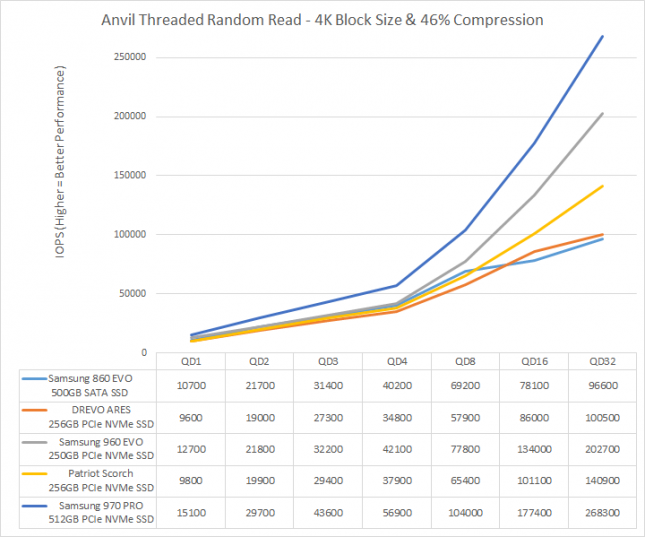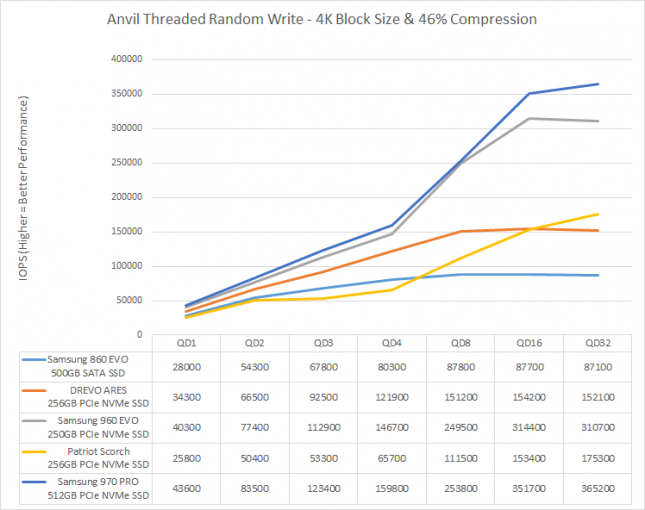Patriot Scorch 256GB M.2 NVMe SSD Review
Anvil Storage Utilities
Anvil Storage Utilities 1.1.0
Along with the move to a new platform, we decided to make a change in one of the benchmarks. There’s a relatively new benchmark called Anvil Storage Utilities that is in beta but close to production. It’s a very powerful tool that measures performance through a variety of tests which can be customized. Since some of the tests more or less duplicate what we get from other benchmarks we use already, we decided to use the IOPS (Input/Output Operations Per Second) testing on 4kb file sizes at a queue depth of 1, 4, 8, 16, 32, 64 and 128. IOPS performance is something SSD makers tout quite a bit but we generally don’t do a lot of IOPS testing because frankly a lot of users can’t relate to IOPS metrics as well and it tends to be more meaningful to the enterprise/server crowd. Still, it is another performance indicator with relevance and while some drives post good MB/s numbers, their IOPS scores aren’t always commensurate which this test will prove out.
Anvil SSD Benchmark with 100% Compression (incompressible data):
Benchmark Results: The Anvil SSD Benchmark showed that with 100% compression (incompressible data) the Patriot Scorch 256GB drive had an overall score of 7,194.47 points. The drive topped out at 1,352 MB/s read and 819 MB/s write speeds on the sequential performance test with 4MB file sizes.
Anvil SSD Applications Benchmark at 46% Compression:
Benchmark Results: With the compression at 46% to help mimic real world applications better we found the overall score improved to 7,137 points, which is a slight performance drop.
Benchmark Results: When it comes to Random 4K Read performance at various queue depths we see the Patriot Scorch doing okay when compared against drives of this capacity like the Samsung SSD 960 EVO 250GB and the DREVO ARES 256GB.
Benchmark Results: The 4K Random Write performance had the Patriot Scorch 256GB drive being the slowest of the group in the QD 1-4 range, which is most used. The performance at QD3 and QD4 was much lower than expected, but this is an entry level NVMe drive.




